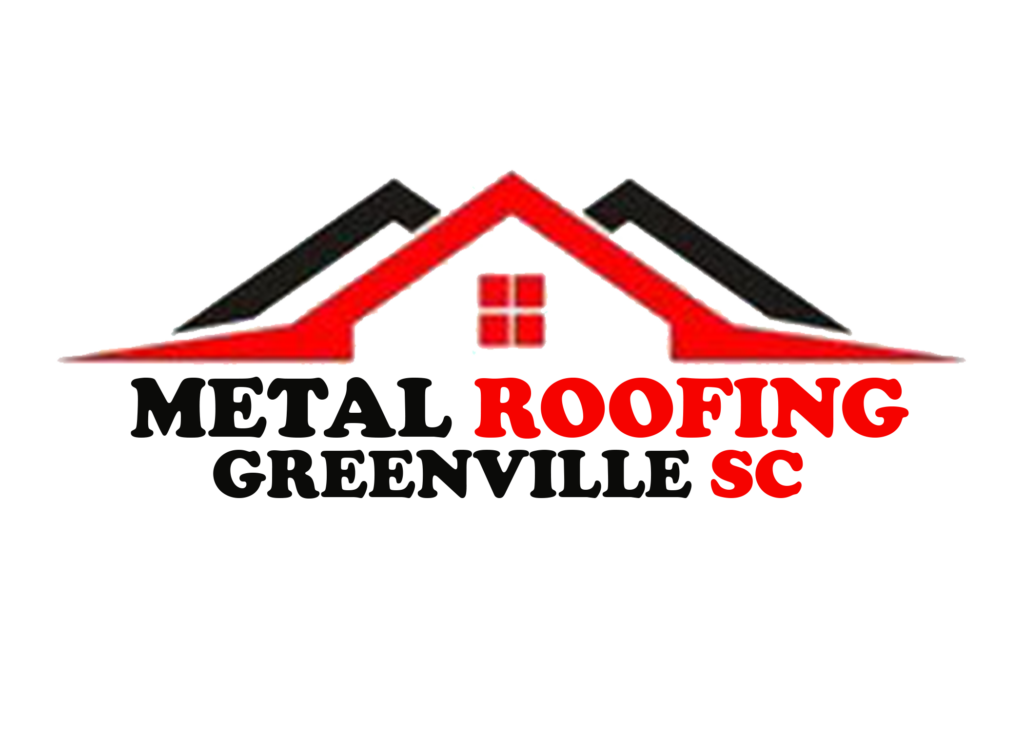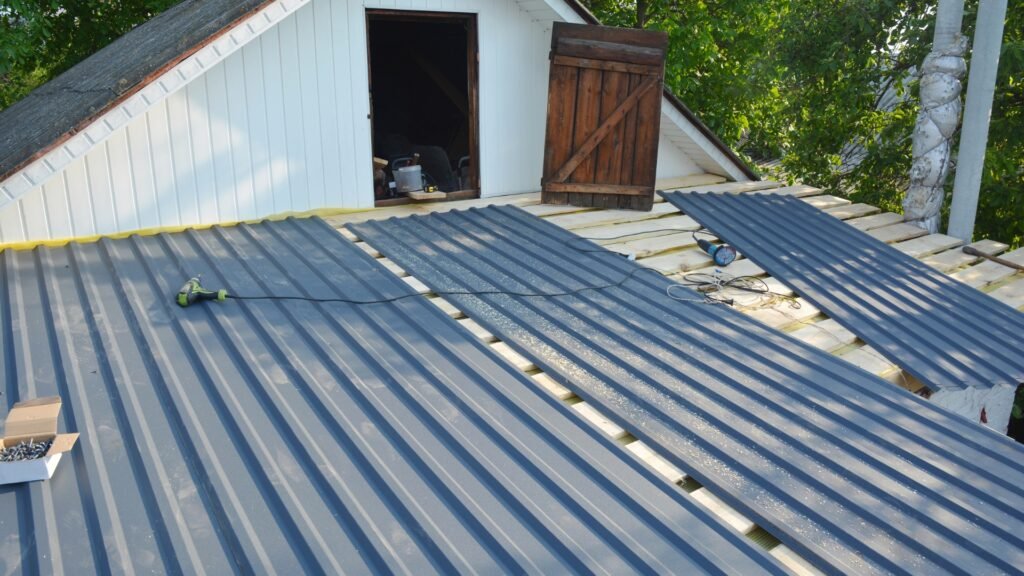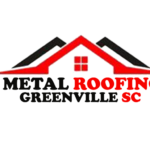Are you considering a new roof for your home or commercial property? Metal roofs have gained significant popularity over recent years due to their durability, energy efficiency, and aesthetic appeal. But are metal roofs better than traditional roofing materials like asphalt shingles, clay tiles, or wood shakes?
In this comprehensive guide, we will explore the many benefits of metal roofs, comparing them with other common roofing materials to help you make an informed decision. Whether you’re looking for a roofing solution that offers longevity, environmental benefits, or improved energy efficiency, understanding the pros and cons of metal roofing is crucial.
Metal roofs offer a variety of advantages, from their long lifespan and resistance to extreme weather conditions to their potential for lower energy bills. However, they also come with considerations such as higher initial costs and the need for professional installation. By diving into these factors, we’ll provide you with a clear picture of whether a metal roof is the right choice for your property.
Join us as we examine the key aspects of metal roofing, including its types, benefits, and potential drawbacks. We’ll also debunk common misconceptions and offer maintenance tips to keep your metal roof in top condition. This article is your ultimate resource for understanding why metal roofs might be the superior option for your next roofing project.
Overview of Metal Roofs
Metal roofs are a versatile and durable roofing option that has gained traction in both residential and commercial markets. Understanding the different types of metal roofs available can help you determine which is the best fit for your property. There are several types of metal roofs, each offering unique benefits and aesthetic options.
One popular type is corrugated metal roofs, which are often seen in agricultural and industrial buildings due to their robustness and cost-effectiveness. These roofs are made from galvanized steel or aluminum, featuring a distinctive wavy pattern that enhances strength and durability. Corrugated metal roofs are renowned for their ability to withstand harsh weather conditions, making them a reliable choice for areas prone to extreme weather.
Another widely used type is the standing seam metal roof, known for its sleek and modern appearance. This type of metal roofing consists of vertical panels with interlocking seams that provide superior waterproofing capabilities. The clean lines of standing seam metal roofs not only offer a contemporary look but also contribute to their exceptional performance in shedding water and snow. This type of roofing is especially popular in residential applications where aesthetics and performance are equally important.
Metal shingles are another option that combines the traditional look of shingles with the advantages of metal roofing. These shingles can mimic the appearance of other roofing materials like slate, tile, or wood shakes, providing a wide range of design possibilities. Metal shingles offer the same durability and longevity as other metal roofing types but with added versatility in style.
Overall, the variety in types of metal roofs means that homeowners and business owners can find an option that suits their specific needs, whether they prioritize durability, aesthetics, or cost-effectiveness. The adaptability of metal roofing materials makes them a strong contender in the roofing market, offering solutions that can cater to different architectural styles and functional requirements.
In summary, metal roofs, including corrugated metal roofs, standing seam metal roofs, and metal shingles, provide a broad spectrum of choices for those seeking reliable and visually appealing roofing solutions. By understanding the distinctions and benefits of each type, you can make an informed decision about which metal roof best suits your property’s needs.
Advantages of Metal Roofs
Metal roofs offer a plethora of benefits that make them a superior choice over traditional roofing materials. Their durability and longevity are perhaps the most significant advantages. Unlike asphalt shingles, which may need to be replaced every 15 to 20 years, metal roofs can last 50 years or more with minimal maintenance. This exceptional lifespan is due to their resistance to common issues such as cracking, shrinking, and eroding, making them an excellent long-term investment for homeowners.
Energy efficiency is another major benefit of metal roofs. These roofs reflect solar radiant heat, which can reduce cooling costs by up to 25%. This energy-saving attribute not only lowers utility bills but also makes metal roofs an eco-friendly option. During the summer, the reflective properties of metal roofing materials help keep homes cooler, while their insulating capabilities provide additional warmth during the winter months. This balance in energy efficiency can lead to significant savings and a reduced environmental footprint.
The environmental impact of metal roofs extends beyond energy savings. Metal roofing materials are often made from recycled content and are fully recyclable at the end of their life cycle. This reduces the demand for new raw materials and minimizes waste in landfills. Additionally, metal roofs can be installed over existing roofs, reducing the need for a tear-off and decreasing the overall environmental impact of a roof replacement project.
Aesthetic appeal is another notable advantage of metal roofs. They come in a wide range of styles, colors, and finishes, allowing homeowners to achieve the look they desire without compromising on performance. Whether you prefer the traditional appearance of metal shingles that mimic wood shakes or the sleek, modern lines of standing seam metal roofs, there is a metal roofing option to suit every architectural style. This versatility enhances curb appeal and can significantly increase the value of a property.
In summary, the advantages of metal roofs include unmatched durability and longevity, exceptional energy efficiency, a positive environmental impact, and a wide array of aesthetic options. These benefits make metal roofs a compelling choice for anyone looking to invest in a reliable, sustainable, and attractive roofing solution.
Disadvantages of Metal Roofs
While metal roofs offer numerous advantages, it’s important to consider their potential drawbacks before making a decision. One of the primary disadvantages of metal roofs is the initial cost. Compared to traditional roofing materials like asphalt shingles, metal roofs require a higher upfront investment. The cost of materials and installation can be significantly higher, which may be a barrier for some homeowners. However, it’s worth noting that the long-term savings in maintenance and energy costs can offset the initial expense over time.
Another concern with metal roofs is noise. During heavy rain or hailstorms, metal roofs can be noisier than other roofing types. This can be particularly noticeable in areas with frequent inclement weather. To mitigate this issue, homeowners can install additional insulation or a sound-deadening underlayment, which can help reduce noise levels. These measures, while effective, can add to the overall cost of the roofing project.
Installation complexity is another disadvantage to consider. Metal roofing installation requires specialized knowledge and skills to ensure proper fitting and sealing. Improper installation can lead to issues such as leaks and reduced lifespan of the roof. Therefore, it’s crucial to hire experienced and reputable roofing professionals for the job. The need for skilled labor can also result in higher labor costs compared to simpler roofing installations like asphalt shingles.
Metal roofs can also expand and contract with temperature changes, potentially leading to issues if not properly installed. The movement of metal panels can cause fasteners to loosen over time, leading to leaks and other problems. This thermal expansion requires the use of appropriate fasteners and installation techniques to ensure long-term performance and durability.
In summary, while metal roofs offer many benefits, potential disadvantages include higher initial costs, noise during rain or hail, installation complexity, and the need for proper handling of thermal expansion. Homeowners should weigh these factors carefully, considering both the short-term and long-term implications, to determine if a metal roof is the right choice for their property. By understanding these drawbacks, you can make a more informed decision and take the necessary steps to address any concerns.
Comparison with Traditional Roofing Materials
When considering a new roof, it’s crucial to compare metal roofs with traditional roofing materials to understand their relative benefits and drawbacks. Asphalt shingles are one of the most common roofing materials, known for their affordability and ease of installation. They are generally less expensive upfront compared to metal roofs, making them an attractive option for budget-conscious homeowners. However, asphalt shingles have a shorter lifespan, typically lasting 15 to 20 years, and require more frequent maintenance and replacement. This can lead to higher long-term costs despite their lower initial price.
Clay and concrete tiles offer a different set of advantages and challenges. These tiles are highly durable and can last up to 50 years or more with proper care. They are also resistant to fire and can withstand severe weather conditions. However, clay and concrete tiles are significantly heavier than metal roofs, which can require additional structural support. This added weight can increase installation costs and complicate the roofing process. Furthermore, clay and concrete tiles are more prone to cracking and breaking under impact, necessitating repairs or replacements.
Wood shakes provide a natural and aesthetically pleasing option, often chosen for their rustic charm and excellent insulation properties. They offer good energy efficiency and a unique appearance that many homeowners find appealing. However, wood shakes have several disadvantages when compared to metal roofs. They are highly susceptible to fire, rot, and insect damage, which can significantly reduce their lifespan and increase maintenance requirements. Additionally, wood shakes typically need to be treated with fire retardants and preservatives, adding to their overall cost.
Slate roofing is another traditional option known for its longevity and beauty. Slate tiles can last over a century and provide a timeless, elegant look. Despite these advantages, slate is one of the most expensive roofing materials in terms of both materials and installation. The heavy weight of slate tiles also demands a robust roofing structure, similar to clay and concrete tiles, leading to higher installation costs.
In comparison, metal roofs offer a balanced combination of durability, energy efficiency, and environmental benefits. While the initial cost of metal roofing can be higher, its longevity and low maintenance needs often result in lower overall costs over time. Metal roofs are also lightweight, reducing the need for additional structural support and simplifying the installation process.
In conclusion, when comparing metal roofs with traditional roofing materials like asphalt shingles, clay and concrete tiles, wood shakes, and slate, it becomes clear that each material has its own set of benefits and drawbacks. Metal roofs stand out for their exceptional durability, energy efficiency, and eco-friendliness. By understanding these differences, you can make a more informed decision about which roofing material best suits your needs and preferences.
Metal Roof Maintenance
Maintaining a metal roof is essential to ensure its longevity and performance. Regular inspections and proactive maintenance can help identify and address issues before they escalate, saving you time and money in the long run.
Regular Inspections: Conduct routine inspections of your metal roof to check for signs of damage, such as loose or missing panels, corrosion, or damaged sealants. Inspect after severe weather events to identify any potential issues caused by hail, wind, or heavy rain.
Cleaning and Maintenance: Keep your metal roof clean by removing debris such as leaves, branches, and dirt that can accumulate and trap moisture. Use a soft-bristled brush or a leaf blower to avoid scratching the surface of the metal. Periodically clean the roof with water to remove dirt and grime, avoiding abrasive cleaners that could damage protective coatings.
Repairing Damage: Promptly repair any damage identified during inspections to prevent further issues. Replace damaged panels, tighten loose fasteners, and reapply sealants as needed. Addressing minor problems promptly can prevent them from developing into larger, more costly repairs.
Long-Term Maintenance Costs: Consider the long-term maintenance costs associated with your metal roof compared to other roofing materials. While metal roofs typically require less maintenance than materials like wood shakes or slate, investing in regular upkeep can extend the lifespan of your roof and maximize its performance.
Professional Maintenance: Hire a professional roofing contractor experienced with metal roofs for more extensive inspections and maintenance tasks. They can provide expert advice and ensure repairs are completed correctly, prolonging the life of your roof and maintaining its warranty coverage.
Conclusion: By prioritizing regular inspections, proactive cleaning, and prompt repairs, you can protect your investment in a metal roof and enjoy its benefits for decades to come. Understanding the maintenance requirements of metal roofs allows you to make informed decisions and preserve the integrity and value of your property.
This section provides practical advice on maintaining metal roofs, emphasizing the importance of regular inspections, cleaning, and timely repairs to optimize performance and longevity.
Common Misconceptions about Metal Roofs
Despite their numerous benefits, metal roofs are sometimes misunderstood due to persistent misconceptions. Addressing these myths can provide clarity and help homeowners make informed decisions about their roofing options.
Rust and Corrosion: One common misconception is that metal roofs are prone to rust and corrosion. Modern metal roofing materials are typically coated with advanced finishes or treated with corrosion-resistant coatings. These protective layers ensure durability and prevent rusting, even in harsh weather conditions.
Lightning Attraction: There is a misconception that metal roofs attract lightning strikes. In reality, metal roofs are no more likely to attract lightning than any other roofing material. They are non-combustible and can safely dissipate the electrical charge from a lightning strike, minimizing the risk of fire damage to the structure.
Noise Concerns: Another misconception is that metal roofs are excessively noisy during rain or hailstorms. While metal roofs can be louder than some other roofing materials, proper installation techniques and insulation can significantly reduce noise levels. Adding insulation between the metal roof and the attic space can effectively dampen sound transmission.
Limited Style Options: Some homeowners may believe that metal roofs have limited style and design options. In fact, modern metal roofing comes in a wide variety of colors, finishes, and profiles, including options that mimic the look of traditional roofing materials like asphalt shingles, clay tiles, or wood shakes. This versatility allows homeowners to choose a metal roof that complements their home’s architectural style and enhances curb appeal.
Conclusion: By dispelling common misconceptions about metal roofs, homeowners can appreciate the many benefits these durable, energy-efficient, and aesthetically pleasing roofing options offer. Understanding the truth behind these myths enables informed decision-making when selecting a roofing material that best meets their needs and preferences.
This section addresses common misconceptions about metal roofs, providing clarity on issues such as rust and corrosion, lightning attraction, noise concerns, and style options. Clarifying these myths helps homeowners make informed decisions when considering metal roofing for their properties.
Conclusion
In conclusion, choosing a roofing material is a significant decision that impacts the durability, energy efficiency, and aesthetic appeal of your home or commercial property. Metal roofs emerge as a compelling option due to their numerous advantages over traditional roofing materials.
Benefits Recap: Metal roofs offer unparalleled durability, with a lifespan that can exceed 50 years with minimal maintenance. They provide excellent resistance to weather elements, including fire, wind, and hail, ensuring long-term protection for your property. Their energy efficiency helps reduce heating and cooling costs, contributing to environmental sustainability and lower utility bills.
Environmental Impact: Metal roofs are eco-friendly, often made from recycled materials and fully recyclable at the end of their lifespan. They can also be installed over existing roofs, reducing waste and minimizing environmental impact during installation.
Aesthetic Appeal: With a wide range of styles, colors, and finishes available, metal roofs complement various architectural designs and enhance curb appeal. Whether you prefer the modern look of standing seam metal roofs or the classic appearance of metal shingles, there’s a metal roofing option to suit your aesthetic preferences.
Considerations: While metal roofs offer numerous benefits, it’s essential to consider factors such as initial cost, potential noise issues, and the need for professional installation. Addressing these considerations ensures that you make an informed decision based on your budget, lifestyle, and property requirements.
Final Thoughts: As you weigh the pros and cons of metal roofs against other roofing materials, consider consulting with roofing professionals to explore your options further. Their expertise can provide valuable insights and recommendations tailored to your specific needs.


